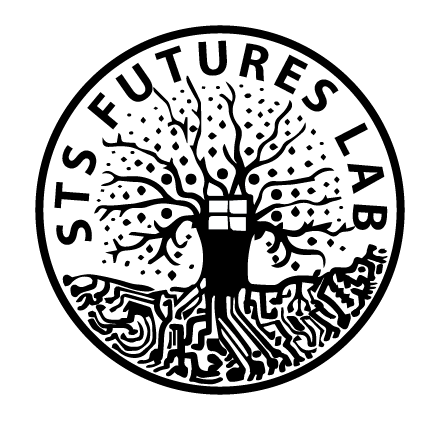By Meghan Jennings
In September 2019, six students from the STS Futures Lab had the opportunity to present their own research at the 4S Conference in New Orleans, LA. The 4S Conference, Society for Social Studies of Science, contained a number of professionals, experts, and undergraduates who presented on or hosted a panel. Sydney VanNostrand and I represent just two of the six students who traveled to New Orleans for this conference from the STS lab. We presented on the Power, Drivers, and Narratives in Sustainable Energy Transitions panel which was hosted by Saurabh Biswas and Carlo Altamirano-Allende from Arizona State University. We received travel funding from our university as well as from the 4S conference itself, which was largely responsible for allowing us to present our research! Sydney and I worked with our professors, Dr. Emily York and Dr. Shannon Conley, to create a research topic that was of interest to both of us. Sydney and I have similar interests in Renewable Energy development and environmental issues. We chose our research topic, A Case Study on Sustainable Energy Transitions in the Virginia Appalachia. This research project focused on investigating the discourses in multiple narratives across the state of Virginia, involving coal miners, politicians, and renewable energy activists. We wanted to discover how the declining coal industry in the Southern Virginia Appalachia was affecting communities, along with the delay in renewable energy infrastructure and generation.
Upon receiving the official acceptance notice for the panel application, Sydney and I began to conduct our own research. We obtained an official IRB from James Madison University in order to conduct our own research ethically and professionally. Sydney and I conducted our own interviews with professors, utility providers, renewable energy alliance members, and other related experts. Through the interview process and by conducting our own background research,we learned just how significant the discourse was between traditional coal mining communities and policy makers. Members of communities located in southern Appalachia were historically reliant on the coal industry for jobs and their routine income. The demise of coal companies in this region left thousands of abandoned acres which were promised reclamation. The ownership of these abandoned areas was often in the hands of just a few people, who paid low taxes on it. The inadequate access to these lands by community members, and empty promises of reclamation, caused severe trust issues with policy makers and outside entities. The decline of the coal industries has caused populations to decrease in these areas, forcing families from their roots to find employment elsewhere.
Sydney and I applied STS perspectives in order to better understand the multiple competing narratives present in this situation. We examined how the science of renewable energy was available in Virginia and the extent to which power of transition was held in a vertically integrated utility and the state government. We applied an STS perspective to understand how these power drivers were woven into coal mining communities and efforts to transition to sustainable energy. One of the key ideas that continued to appear in conversations with interviewees was that coal miners possess transferable skills which can be applied to the solar industry.The attitudes and apprehensiveness of community members to outside entities can be attributed to the historical lack of communication and distrust with policy makers. The landscape of utility power in Virginia is a key factor in the lack of success of transitioning to sustainable energy generation. Virginia has two main utility companies that supply power to consumers. The interconnectedness of utility companies and policy agendas has dampened the growth of renewables in Virginia, and especially in the south west Appalachian. The feasible transition of coal miners to the solar industry would require training programs funded by the government, along with requirements of utilities to develop such projects. We attended to the power dynamics in Virginia, and tried to understand how these dynamics affected different stakeholders in the state.
A lot of STS work shows how important it is to work with communities from the bottom up, and including them in the process of rebuilding. Although it is a very different context, we were inspired by the case of the Zimbabwe Bush Pump written by Marianne de Laet and Anne Marie Mol, which highlighted the failure of placing technology in the hands of a community without engaging the community from the outset in understanding the problem and developing solutions. The Bush Pump case can be applied to this work in the sense that there are many factors that go into making a water pump, or any technology, successful, not just the working parts. In the case of energy transitions in Virginia, this can be seen in terms of facilitating those displaced from the coal mining workforce into the solar technology industry with proper access to training, support, and job opportunities. The feasible transition to sustainable energy systems in Southwestern Virginian communities requires not only the funding of training programs, participation of utilities, but also a relationship between community members and involved entities.
Through conducting my own research, I gained experience with interviewing professionals and qualitatively analyzing the results. Since my experience in the STS lab, I have been able to employ these strategies and skills to the Collegiate Wind Competition at JMU. I have been interviewing stakeholders and professionals in the project area, deploying the methods of analysis I learned through my research in STS lab. I have also been continuing my research with the energy discourse I examined in Virginia, in South Dakota where a similar transition is occurring at a more rapid rate.


Recent Comments